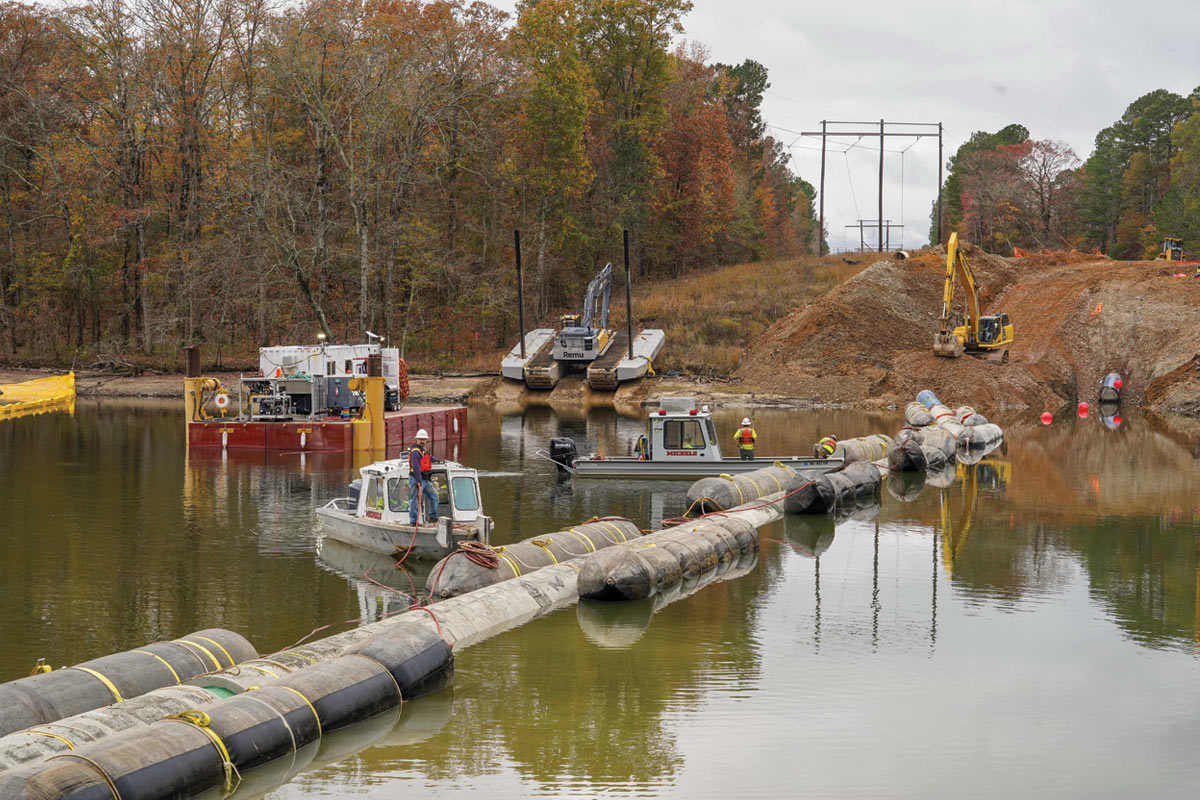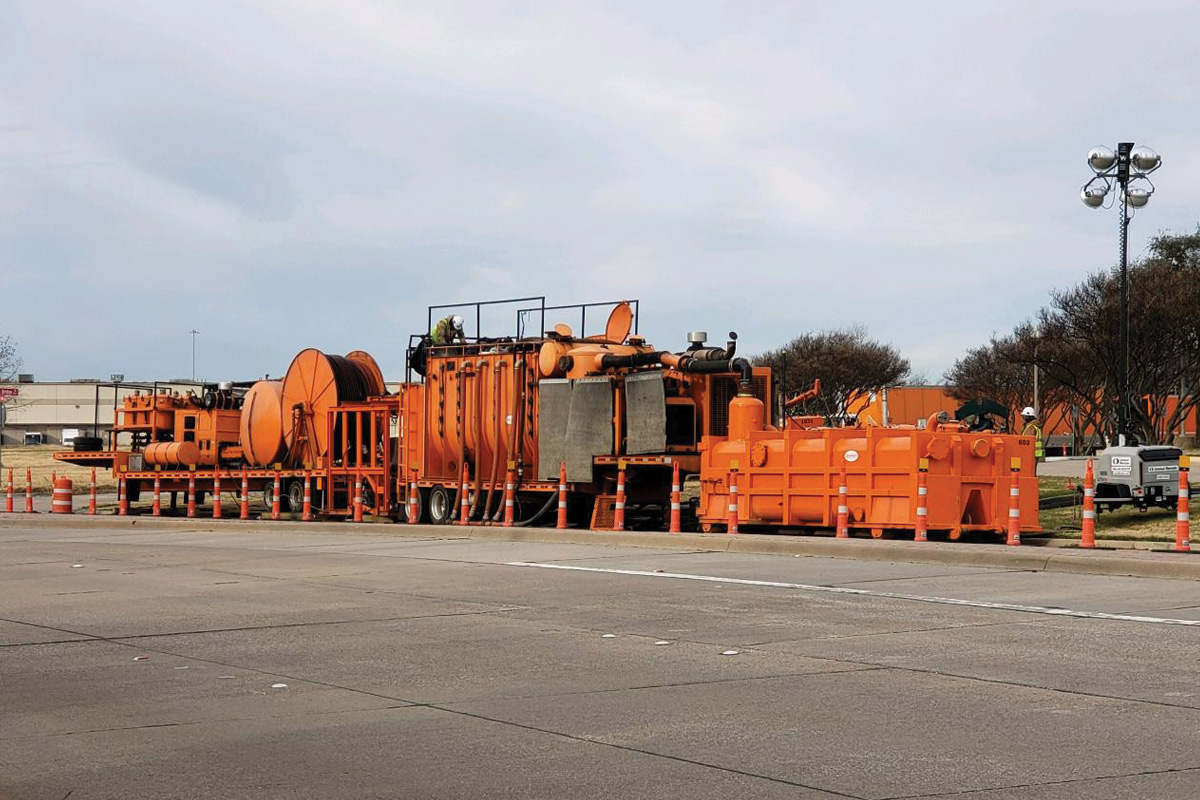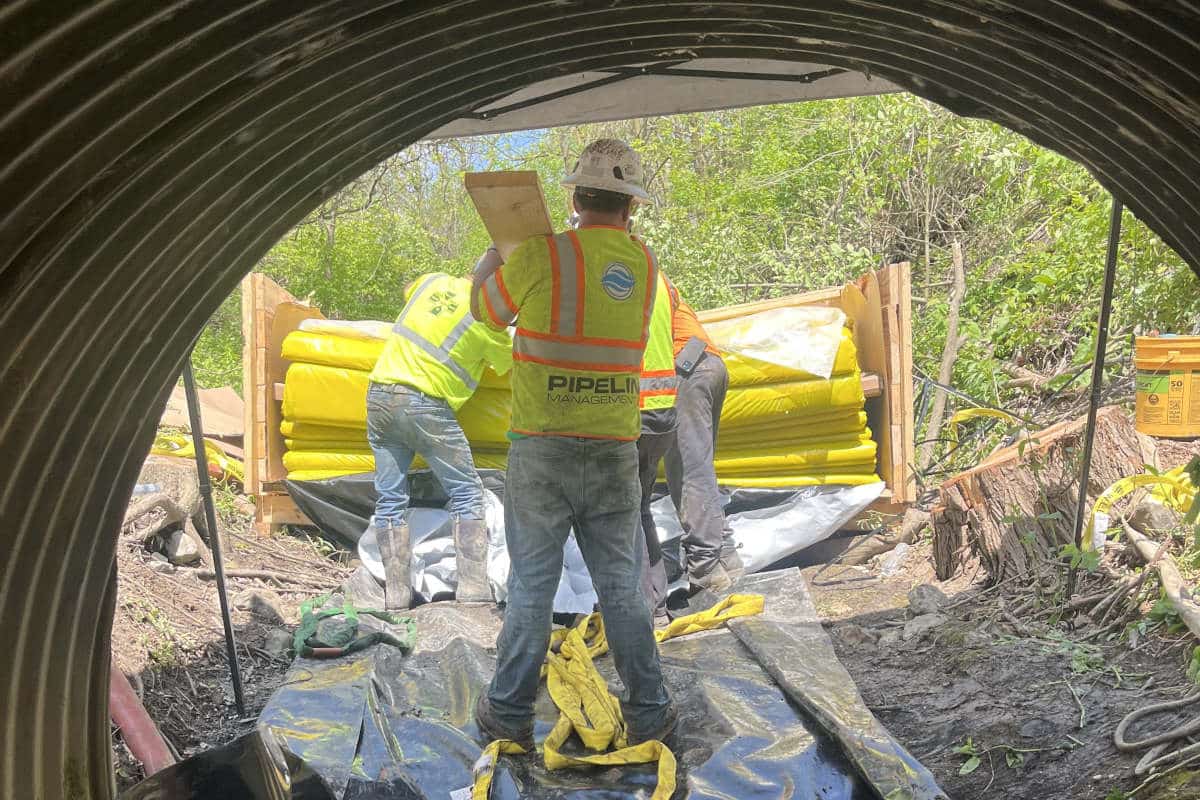
Keys to Bypass Pumping Success
July 1, 2008
 All of the stories below have a common theme: happy clients with successful projects. Keys to making these jobs happen frequently are the keys to a successful company and especially a successful bypass pumping operation. Below are a few elements that should be followed for a successful bypass pump job and were followed on the jobs presented.
All of the stories below have a common theme: happy clients with successful projects. Keys to making these jobs happen frequently are the keys to a successful company and especially a successful bypass pumping operation. Below are a few elements that should be followed for a successful bypass pump job and were followed on the jobs presented.Scope of Work — Fully understand what the client wants, as well as the client’s customer, which ultimately is everyone’s client, the end-user. Work with your customer to provide up-to-date data for submittals and drawings that are accurate and representative of the equipment that is being supplied.
Have a Creative, Fuel-Efficient Solution — Offer new and innovative ideas. In today’s market, operating a diesel-driven pump is very costly with fuel prices rising almost daily. Pump efficiency is key to getting the best value for the money spent on a bypass. Any bypass company should be able to show, in print, what the pump efficiency is at a given RPM and what the NPSR (net positive suction head required) is. The more efficient the pump, the more fluid it pumps for the same dollar’s worth of fuel. For example, Rain for Rent has made a substantial investment into bypass pumps specially designed for high-efficiency; its engineered systems have saved thousands of dollars for short bypass operations to tens of thousands for longer duration projects vs. standard bypass pumps.
Be Committed to Safety and On-going Training — Have a fully competent and well trained staff that is aware of the job specific requirements and the hazards that are unique to the particular job. No one wants a sewage spill or a person injured on a jobsite. In this business, you have to be able to say, “I know,” not “I think.” You can only say that when you are properly trained and aware of all safety issues. If the job is unsuccessful, it affects everyone within the trenchless industry, and to some degree, the entire trenchless process because of lost confidence.
Use the Right Equipment — Selecting the correct piping, hose and transition fittings are key. These items are what keep the sewage contained and keeps the project operating smoothly. Many times the savings of a few dollars because of not putting in an extra valve, air vent or a standby pump has resulted in a substantial loss on a project. After a disaster has happened and you have made the local news, it is easy to say “I knew we should have” or “I told them this wouldn’t work” but by then, it is too late.
Simply put, understand your scope of work, use well trained staff and put in the right system the first time from a reliable company that stands behind its work. If you do that, you will have a successful bypass job every time.
New York Bypass
A western New York construction company needed a 12-mgd sewer bypass in a high traffic, residential neighborhood near a parking garage. The contractor was bypassing the main influent sewer lines that went into the sewer authority to a cured-in-place pipe (CIPP) line, making tie-in connections for a new solids and floatable removal building. Because of the limited space on site, fusion had to be done in very tight quarters that other pump companies said would be more costly, but Rain for Rent was able to accomplish the task economically.
Rain for Rent placed four, DV300i, 12-in., sound-attenuated pumps on the sidewalk and in the street. Also, 3,000 ft of 18-in. HDPE discharge piping was placed, two, 18-in. road crossings that were being used to keep access to a parking garage open and an 18-in. Magnetic Flow meter. The discharge line had to be placed against a chain link fence right on the curb and stay out of the street. The contractor is a major player in the New Jersey/New York area and had never rented from Rain for Rent in the past, but was very pleased with the outcome of the project.
Engineered Bypass for Northern California Wastewater Treatment Plant
When a northern California wastewater treatment plant (WWTP) required a bypass to handle 100 percent of its 31 mgd sewer influent while the decaying RCP headworks pipelines were cleaned, relined and visually inspected, plant officials contacted Rain for Rent.
The WWTP that received and treated sewage from four major cities was extremely antiquated and in dire need of influent line refurbishment. With safety as its top priority, Rain for Rent provided a unique turnkey pumping solution consisting of four pump stations with suction lifts averaging 30 ft. Each station involved pumps, pipe, fuel cells and spill containment. The entire project consisted of five, 6-in. DV-150i Sound Attenuated (SA) pumps; six, 8-in., DV-200c pumps; two 20 hp, one 13 hp and two 35 hp submersible pumps; five fuel cells; 2,500 ft of 18-in. HDPE pipe; 200 ft of 12-in. Victaulic pipe with valves and fittings; and Spillguards.
A 25-ft x 50-ft x 5-ft pit was excavated to stage the six DV-200c pumps so that suction access could be established. Two 35 hp and two 20 hp submersible pumps were placed in a 7-ft x 7-ft x 30-ft deep vault. Four road crossings provided emergency access to WWTP employees including access to an electric company’s substation located inside the plant.
The flow was bypassed from each of the four cities’ pipelines and pumped into the WWTP’s Emergency Holding Basin. In addition to providing design and installation, Rain for Rent provided pump watch for the duration of the project. The bypass was the largest portion of the project and the biggest concern — and was successfully completed.
Memphis Bypass
In April 2006, Rain for Rent New Jersey was working on selling some Power Prime Pumps to a national CIPP contractor based in the New Jersey area. While discussing pumps with the contractor, the Rain for Rent learned of a 120-mgd bypass that the contractor was recently awarded in Memphis, Tenn. The contractor already had a quote from another pump company for a turnkey system to bypass up to 120 mgd while a 108-in. diameter line was being lined. This 108-in. line was the last leg before the treatment plant, which handles the sewage flow for a greater portion of Memphis and part of Mississippi. Through hard work and a few challenging hours, Rain for Rent quickly turned out the winning bid. High flow and high lifts created the need for a large excavation and expensive concrete trench boxes. One of Rain for Rent’s winning advantages was the efficiency of its DV-400 16-in. pumps, equating to money saved through lower fuel cost and a need for fewer pumps.
The project was delayed several times, but when the project finally began in October 2006, Rain for Rent installed 12 DV-400s, and 7,000 ft of large diameter HDPE complete with hoses and fittings. The CIPP contractor finished lining the 108-in. concrete line in early December.
Paul Reilly is Rain For Rent’s division manager, who oversees large bypass projects and its filtration division.




